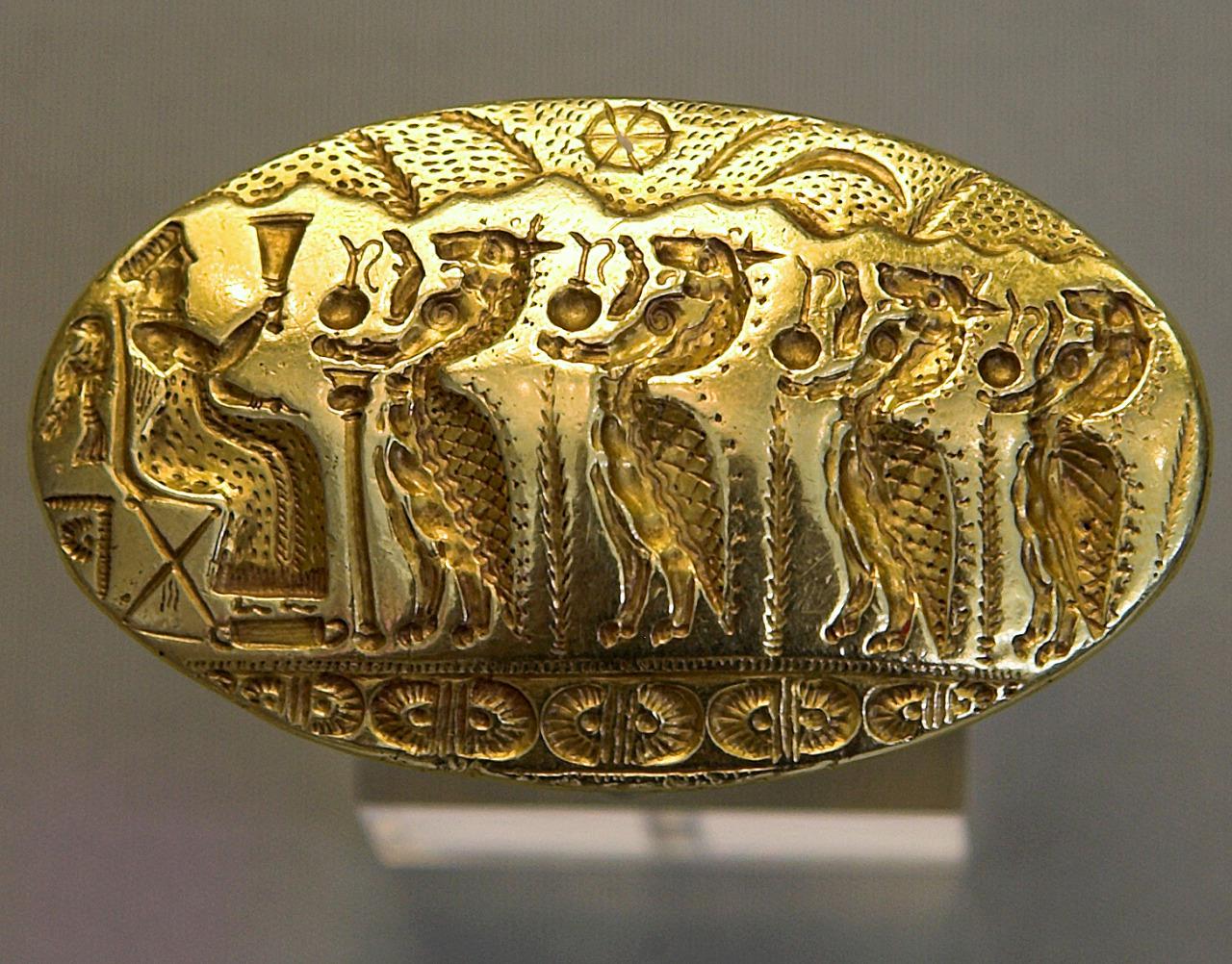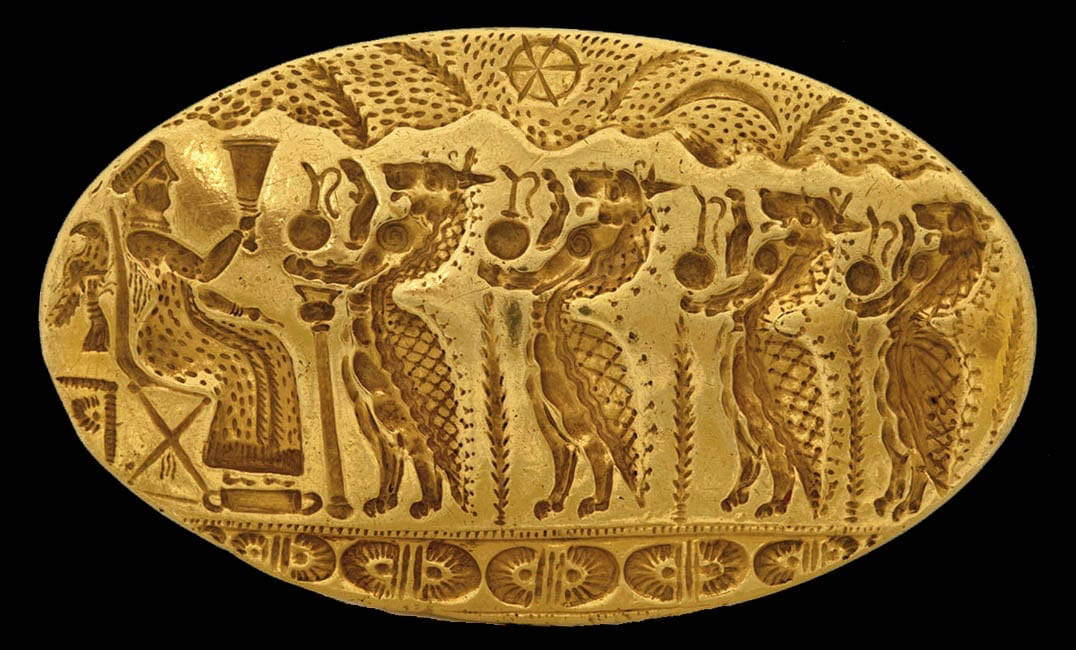The Mycenaean Gold Ring, crafted in the 15th century BCE, stands as a testament to the advanced artistry and symbolic depth of the Mycenaean civilization. This exquisite artifact, now exhibited at the National Archaeological Museum in Athens, showcases the cultural sophistication and spiritual beliefs of a society deeply connected to both land and sea.
Intricate Craftsmanship and Design
The gold ring features a depiction of a seated goddess before a procession of seahorses, an intricate motif laden with meaning. This design underscores the technical skill of Mycenaean artisans, who transformed precious metals into objects of both beauty and significance. Measuring less than a few centimeters, the ring captures complex imagery, reflecting a blend of narrative storytelling and symbolic representation. The inclusion of marine elements like seahorses suggests a reverence for the sea, possibly linked to deities governing maritime realms.

Such craftsmanship highlights the advanced metallurgical techniques of the Mycenaean era, including gold repoussé and engraving. These techniques allowed artists to achieve delicate details and fluidity in their designs, elevating the ring to more than an ornament—it became a vessel of cultural and spiritual expression.
Cultural and Religious Significance
The seated goddess likely represents a deity associated with fertility, protection, or the natural world, as was common in Mycenaean and Minoan religious iconography. The presence of seahorses adds another layer of interpretation, potentially symbolizing the importance of the sea to Mycenaean society.

The Mycenaeans, like their Minoan neighbors, relied heavily on maritime trade and navigation. Thus, the sea was both a source of sustenance and a bridge to other cultures. This duality could explain the prominence of marine imagery in their religious artifacts, suggesting a spiritual link between the divine and the ocean.
Elite Ownership and Burial Context
The ring was discovered in Grave Circle A, a royal burial site at Mycenae known for its opulent grave goods. The graves contained numerous gold artifacts, indicating the elite status of those interred. The gold ring’s association with this site reinforces its role as a marker of social distinction. Such items were likely worn by members of the aristocracy, serving both as status symbols and as tools in ritualistic practices.
Aegean Connections: Mycenaean, Minoan, and Cycladic Influences
The design elements of the ring echo motifs found in Minoan and Cycladic art, revealing the interconnected nature of Aegean cultures during the Late Bronze Age. For instance, the seated goddess mirrors similar figures seen in Minoan frescoes and seals, while the marine imagery reflects shared maritime themes. These parallels suggest a cultural exchange, where ideas and religious symbols traversed the Aegean Sea, enriching the artistic lexicon of its inhabitants.

Legacy and Interpretation
The Mycenaean Gold Ring is more than a dazzling artifact—it offers invaluable insights into the spiritual and social fabric of Mycenaean life. Its intricate design challenges modern perceptions of prehistoric cultures, revealing a society capable of profound artistic and symbolic expression.
Moreover, this artifact bridges the gap between art and utility, embodying the values, beliefs, and identity of its creators. The ring not only adorned the elite but also acted as a spiritual connection to the divine, reflecting the Mycenaeans’ complex worldview.
Conclusion
The Mycenaean Gold Ring stands as a beacon of cultural sophistication, underscoring the artistic ingenuity and spiritual depth of one of history’s most fascinating civilizations. Its maritime symbolism, religious overtones, and royal provenance provide a rich narrative that continues to captivate scholars and visitors alike. This small yet monumental artifact reminds us of the enduring human desire to create beauty, seek meaning, and connect with the divine.

